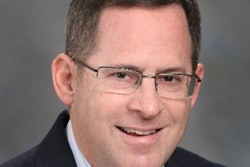
HONOLULU - The utilization rates of all imaging modalities for noninvasive carotid imaging have declined over the past decade with one exception -- CT angiography (CTA). CTA use for carotid imaging has grown by nearly 700%, according to a presentation on Monday at the American Roentgen Ray Society (ARRS) meeting.
The researchers from Thomas Jefferson University Hospital analyzed the U.S. Medicare databases to understand the pattern of carotid imaging utilization from 2004 to 2016. They discovered that CTA was the only test with a growing usage rate throughout this period, although ultrasound remained the most frequently used modality.
The use of ultrasound and MR angiography (MRA) has declined in recent years, but there has been a rise in use of CTA since 2004, presenter Dr. Sarah Kamel told session attendees. "CTA use has surpassed MRA and comprised 20% of carotid imaging in 2016. Ultrasound remains, nonetheless, the most frequently utilized modality," she noted.
Carotid imaging utilization
Prior research has reported a substantial decline in the number of carotid interventions performed in recent years. Carotid imaging utilization, too, has been on the downswing since the U.S. Preventive Services Task Force, American Heart Association, and American Stroke Association have stopped recommending screening for carotid disease in asymptomatic patients.
To shed light on the declining trend in carotid imaging, Kamel and colleagues examined the usage rates of different imaging modalities for noninvasive carotid imaging based on the U.S. Medicare Part B fee-for-service databases from 2004 to 2016. They focused on ultrasound, CTA, and MRA utilization rates, as well as the medical specialty of ordering providers.
The combined utilization rates of ultrasound, CTA, and MRA reached its peak in 2008, with 3,900 out of 100,000 Medicare beneficiaries undergoing carotid imaging that year, the researchers found. The usage rate for the collective modalities fell to 3,400 per 100,000 beneficiaries in 2016, a decrease of approximately 13%.
For ultrasound alone, usage steadily increased until 2009, after which it began to trend downward. By 2016, ultrasound usage decreased by roughly 28%. In a similar fashion, MRA utilization increased until 2006 but then gradually decreased until 2016, with a total dip of 31%.
In contrast, the usage rate of CTA has steadily increased throughout the entirety of the same period, starting at 100 per 100,000 beneficiaries in 2004 and reaching 800 per 100,000 beneficiaries in 2016, an increase of 699%.
| Carotid imaging utilization rates among Medicare beneficiaries | ||||||
| 2004 | 2016 | |||||
| Ultrasound | MRA | CTA | Ultrasound | MRA | CTA | |
| Usage rate per 100,000 beneficiaries | 2,800 | 600 | 100 | 2,100 | 500 | 800 |
Total carotid imaging utilization by physician specialty was 44% for radiology, 25% for cardiology, 11% for vascular surgery, 3% for neurology, and 14% for all other specialties. The percentage share of ultrasound alone by specialty was 34% for radiology, 30% for cardiology, 17% for vascular surgery, 3% for neurology, and 16% for other specialties.
There was little diversity, however, in providers who used CTA and MRA; both tests were almost exclusively ordered by radiologists. Since CTA usage rates surpassed those of MRA in 2013, the gap between the two imaging modalities has only continued to widen. Considering that CTA was the only imaging modality with an overall increase in usage rate, it appears that radiologists have started to prefer CTA over MRA for carotid imaging.
Why is CTA use increasing while utilization rates for the other imaging modalities are trending downward?
The reason behind this tendency may be due to the increased accessibility of CTA for patients in need of carotid imaging, Kamel noted. Recent research also has indicated that the use of CTA for other regions of the body, including coronary CTA, continues to grow, especially among radiologists.
"Regardless of the primary cause [for these trends], the increasing use of a more costly modality, especially compared to ultrasound, may be concerning to payors in the future," she said.




















